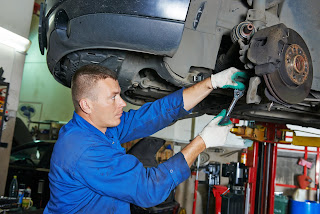Toyota Wheels and tires are the only pieces of your Orlando
Toyota that make contact with the ground and, therefore, need special care. If
you find your vehicle riding a little rough or bumpy, it could be caused by an alignment
or a balancing issue with your Toyota wheels. Balancing and alignment is easy
to get mixed up and that’s why Toyota of Orlando is here to set the record (and
your wheels) straight.
What’s the difference?
Although both keep your Toyota wheels working normally, balancing
and aligning perform different functions and require different procedures. Here
are a few key facts to know about wheel balancing and alignment, straight from
our auto service department!
Wheel balancing
As your tires age and wear down, sections of them may wear down
faster, get chipped, or lose more tread than others. This is where Orlando
Toyota wheel balancing comes in. Using a machine that measures weight over a
certain number of tire revolutions, weights are attached to the wheel itself in
certain areas. This is done to counteract excess weight in other spots on the
tire. Weights can either be stuck with adhesive to the inside of the Toyota
wheel itself or hammered onto the outside of it. If your balancing is off, this
can cause your tires to wobble and hop when driving at higher speeds.
Wheel alignment
While balancing issues are remedied by applying weights,
alignment issues aren’t so easily solved. Wheel alignment is done to keep your
wheels and tires parallel to each other and perpendicular to the ground to keep
your vehicle riding easily and efficiently. Before we go any further,
here are a few terms that you’ll want to know regarding maintenance issues that
can occur with your Toyota wheel alignment:
·
Camber:
This is the angle of the Toyota wheel when viewed from the front of the
vehicle. Essentially, this is the top of the wheel pointing away or towards the
center of your Orlando Toyota. Positive camber means your tires are pointing outward
and negative camber means they’re pointing inward.
·
Caster:
An alignment issue can also be caused by a caster misalignment. This is referring
to the angle your Orlando Toyota’s steering pivot (a part of your suspension
system) is facing. A negative caster means that your steering pivot is facing
more toward your headlights and positive castor means its facing toward your windshield.
·
Toe: This
term has to do with the direction your wheels are pointing in relation to the
road and to each other. If your Toyota wheels are toe out, that means they’re
pointing away from each other and toe in means they’re pointing towards each other.
For your Orlando Toyota wheels to be in perfect alignment, all of the angle
types need to be at zero degrees or pointing straight. Maintenance issues like
these can cause uncomfortable driving and degrade your fuel efficiency.
Balance and align your wheels at Toyota of Orlando
Ignoring these maintenance issues can put a damper on your driving
and lead to even worse issues in the future. At Toyota of Orlando, our expert
auto service team can get your Toyota wheels back to normal, so you can get
back on the road! Call us at (407) 298 – 0001 to schedule your service
appointment.


















